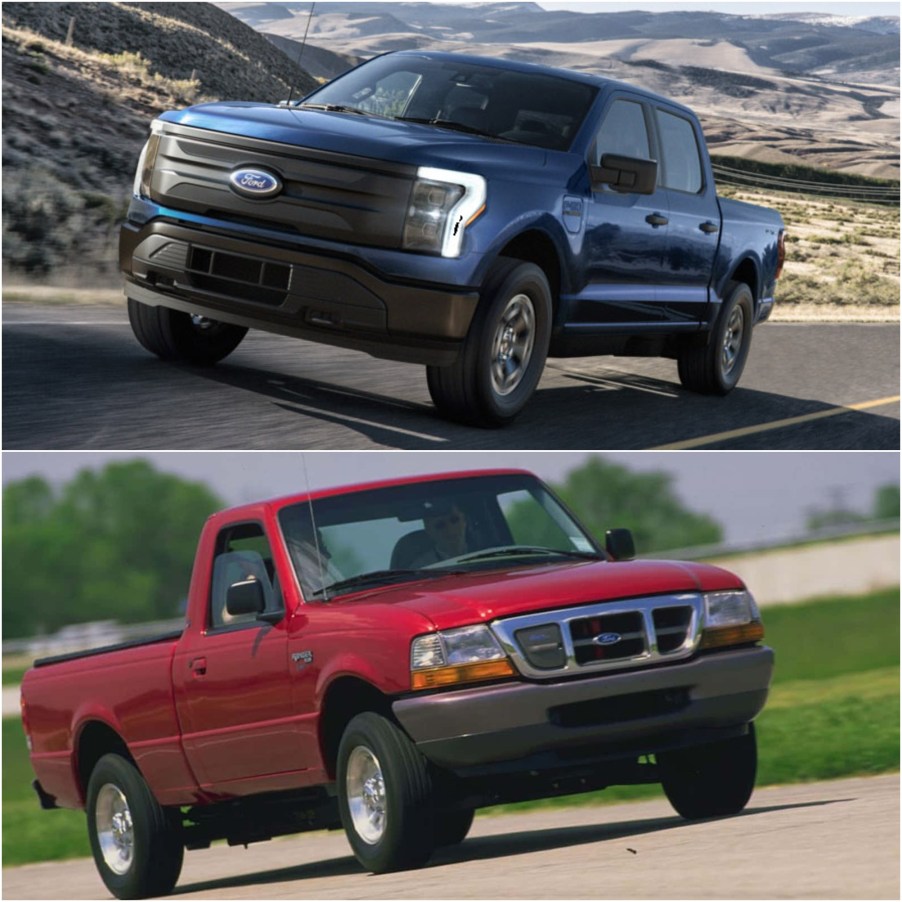
The Ford F-150 Lightning Wasn’t Ford’s First Electric Truck
Everyone’s talking about how the Ford F-150 Lightning is the first affordable electric truck. It’s Ford’s answer to the problem of EV utility vehicles being too expensive. It’s got all the towing capabilities and power outlets one would ever need. But this isn’t Ford’s first attempt to electrify one of their trucks. Ruler of the light utility segment, the Ford Ranger was converted to an EV back in 1998 but has since been forgotten like many EVs of the time.

The Ford Ranger EV was built to beat the competition
Experimental electric cars began being put into production in the 90s, the EV1 paving the way for consumer EVs. And after the renowned success of the EV1, Chevy piggybacked off it with an electric version of the S-10. The Ranger EV was the direct result of Chevy tapping into the light electric truck market. You furrow your brow, wondering if there’s a market for such vehicles. Well, electric trucks like the Ranger and the S-10 were often seen as fleets vehicles. And that’s exactly what both Chevy and Ford were after.
Now, let’s talk production numbers, courtesy of Autotrader: there were 1,100 Chevrolet EV1s made from 1996 to 1999 before they were sent to the scrapyard. The Chevy S-10 only saw 459 production units (60 of which were sold and are, in theory, running around today). The electric Ford Ranger, however, beat out both in terms of production. 1,400 units were made from 1998 all the way up to 2002, 200 of which were sold to the public. But how did it perform?
Stats and specs of the electric Ford Ranger

The electric Ford Ranger was certainly modest, with just 90 horsepower thanks to the 28 kWh lead-acid batteries. It started with a carrying capacity of 700 and a range of 60 miles due to that battery pack’s 2,000 lb weight. Not quite the Ford F-150 Lightning figures we’re used to. But later versions swapped those lead-acid batteries with nickel-metal-hydride batteries. That bumped the range up to 80 miles and the payload up to 1,250 lbs (since the battery pack was now lighter). And, according to Ford, it could charge 80% in just three hours, making it perfect for running around the city.
But the electric Ford Ranger succame to an unfortunate fate. The 200 trucks sold still remain on public roads, but the rest were scrapped after Ford pulled the plug. Though the owners of those last 200 or so Ranger EVs are still active on their forum, Revolt. And they’ll be happy to know that a greener Ranger may still be in the works.
The Ford Ranger could soon be a hybrid, or an EV, or both.

There are rumors about the Ford Ranger being turned into a plug-in hybrid, or reverting to an EV. After all, the Ford F-150 transitioned to electric with the Lightning. It makes sense for the Ranger to make the leap. And then there’s the Ford Maverick, an all-new plug-in hybrid truck and the smallest truck in Ford’s lineup. While it’s not a Ranger, they’re both built for people who don’t want too much truck.
But as more electric trucks take the stage, from Ford, Chevy, or GMC, it’s fun to look back on where they originated. And while the F-150 Lightning likely didn’t take inspiration from the original Ranger EV, it’s important to acknowledge the past before embracing the future.


